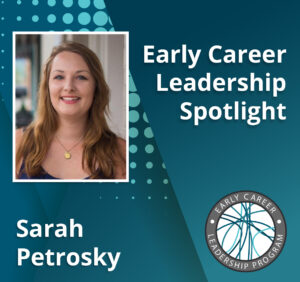Today’s guest post was contributed by Miriam Bergeret, MSc, a scientific writer and editor. Her work can be found at pensandpipettes.com.
Our ancestors’ DNA may be ancient history, but our ability to decipher it is relatively new, going back only a decade or two. The study of ancient DNA (aDNA), also known as paleogenomics, has improved our understanding of human pre-history, providing significant insights into the lives and migration patterns of early humans. Scientists have begun to use aDNA to better understand the shared genetic roots of modern-day human populations and to revisit the age-old question: “Where do we come from?”
Questions remain, however, about the accuracy of using methods developed for aDNA to reconstruct more recent genetic ancestry (so-called archaeogenetics), especially as recent human demography has become more complex and populations have become more genetically similar over time due to mass migrations and increased gene flow. It’s unclear whether existing methods can be used to accurately reconstruct the genetic history of complex and closely related populations.
In a report published in GENETICS in September, Williams et al. set out to evaluate the performance and potential limitations of two common statistical methods used in archaeogenetics in increasingly complex scenarios.
The first method, called the f3-statistic, focuses on finding evidence that a population was formed as a mixture between two candidate populations. The other, qpAdm, is used to estimate how much ancestral source populations may have contributed to an admixed descendent population.
To evaluate the potential biases and limitations of these otherwise powerful methods, the authors tested them on simulated models—first with four simple admixture models of varying complexities and configurations, then with a complex real-world model of Eurasian history using whole-genome data modified to mimic aDNA.
The simulations posed challenges such as identifying which population contributed to a gene pool when populations are very similar, untangling complex ancestry connections, and working with short time gaps between mixing events, as well as the challenge of high rates of missing data in aDNA.
The authors report that one of the primary factors influencing qpAdm performance is the degree of population genetic differentiation—consistent with previous findings in the field.
Importantly for the study of historical population demography using aDNA, qpAdm’s performance remains robust in situations with complex admixture histories and varying generations since admixture. When applied to simulated European, Mediterranean, and Southwest Asian genetic histories, qpAdm identified plausible ancestry models that incorporated both true source populations and closely related non-source populations. While these results suggest that qpAdm can’t provide fine-scale answers to nuanced historical demographic questions, the authors note two observations: (1) the population closest to the true admixing source was consistently the most frequent in the set of plausible ancestry models and (2) the hierarchical arrangement of qpAdm’s model p-values closely corresponded to the ranking of plausible models relative to the true model.
However, because their study modeled population changes as a series of discrete splits and mixing events that were each followed by independent genetic drift, the authors caution that their findings may not apply to human settlements that instead followed more gradual, step-by-step patterns.
Overall, Williams et al. show that while complex gene flow can affect which models are seen as plausible, it doesn’t significantly lower the performance of qpAdm. Based on their observations, Williams et al. provide valuable strategies for disentangling plausible, closely-related ancestry models and improving our understanding of our genetic history. The authors hope their work can help guide other users on how to improve the accuracy of reconstructing historical populations.
References
Testing times: disentangling admixture histories in recent and complex demographies using ancient DNA
Matthew P. Williams, Pavel Flegontov, Robert Maier, Christian D. Huber
GENETICS. September 2024; 228(1).
DOI: 10.1093/genetics/iyae110































